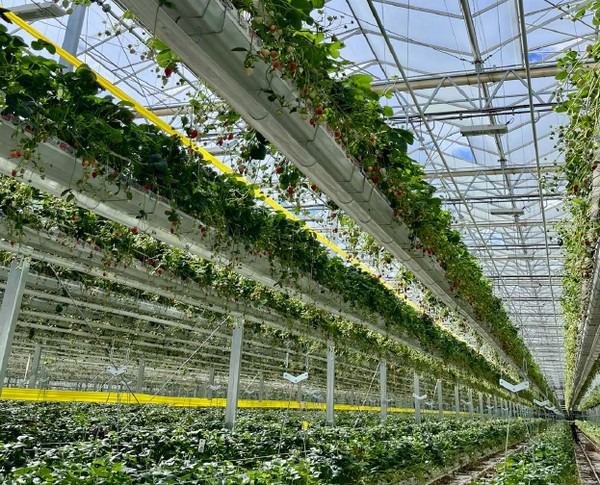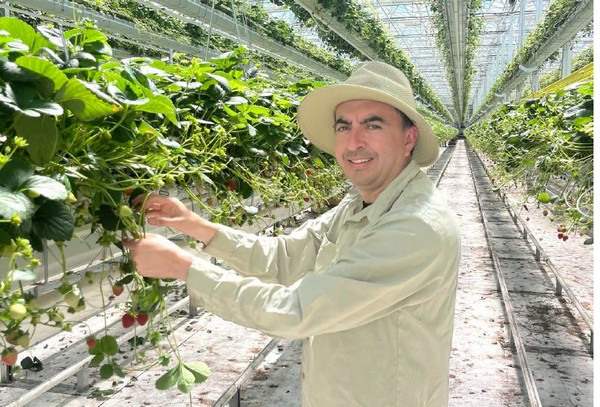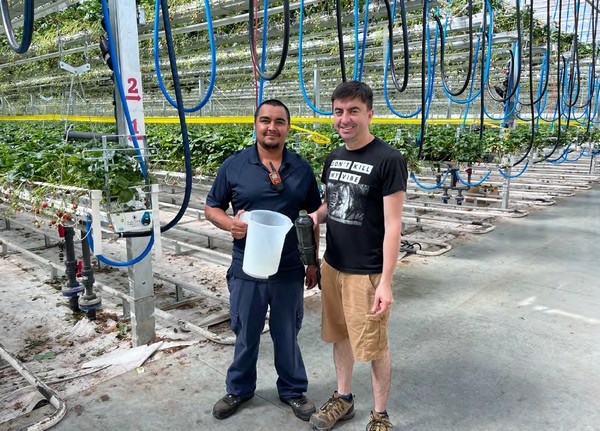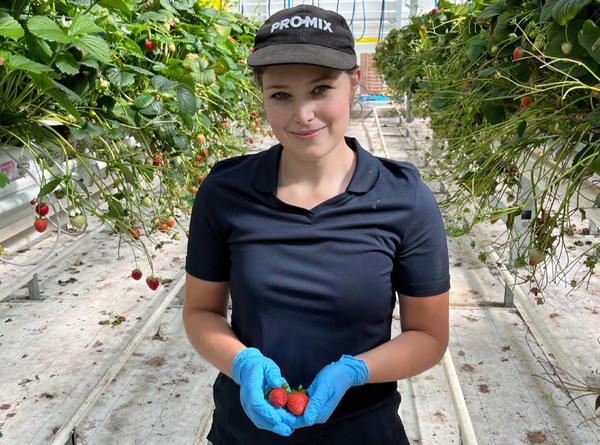Canadian grower Sunterra Greenhouse is primed for growth after its first successful year of lit winter production in the cold Canadian climate, eyeing a 20ha expansion of Soraya strawberries, a variety by ABZ Seeds. “We are into our second season and currently have 8ha, 1ha of strawberries, and 7ha of TOV,” explains Amanda Hehr, President of Sunterra Greenhouse. Due to the booming Canadian berry market, Amanda and Sunterra are contemplating accelerated expansion into more strawberry acres. “The master plan for our first site allows for an additional 20ha of growth, and we are seriously considering allocating that entirely to strawberries,” she points out. That does sound like a lot of strawberries, but here’s the thing: strawberries are the second most consumed fresh commodity and a strong driver for all produce category sales, Amanda says, with most imports coming from Florida, Mexico, and California field operations. “So, there are a lot of opportunities in this space.”

Advancements in lit cultivation
This has created a situation where demand far outweighs supply, “which makes price favorable,” Amanda points out. Over the last two years, there have been many developments in the berry segment as to how to grow this product profitably also during the months from November to March. When lit berry cultivation proved to be profitable, many growers switched to berries and LEDs. Sunterra too utilizes LEDs to complement the bright sun of Alberta. “This is one of the provinces that enjoys the most sunlight hours in Canada, and we augment that natural resource with LED technology to grow our berry crop year-round.”

Dealing with the situation
Yet, rising energy costs, next to increasing fertilizers cost, have forced Amanda and Sunterra to adapt themselves to the new scenario. “The original model for this business was based on prices from 3 years ago, with regards to both energy and fertilizers. That means that now we have to carefully decide when to turn the lights on. It’s a delicate balance when to use our lights, and this is surely one of the biggest challenges.”
Yet, the biggest hurdles came up when COVID hit. “Construction was delayed, and costs escalated, but there was no other direction but forward,” Amanda says. Thanks to a program offered by Emissions Reduction Alberta, Sunterra Greenhouse recovered 25% of the cost of the LED lights with the Energy Savings for Business grant program.

Labor supply
Construction delays weren’t the only thing Sunterra Greenhouse had to deal with during the peak of COVID. “The biggest challenge for all CEA growers right now, us included, is labor supply,” Amanda says. “Alberta trails BC, Ontario, and Quebec for greenhouse acres, so we don’t have the same access to experienced labor as different parts of Canada. Once construction was complete, we had to invest substantially in skill development.”

In the meantime, supply is desperately chasing demand. “We are years away from market equilibrium in the berry market in Canada,” Amanda points out. That is also because as consumers become savvier of the greens and fruits they consume, more people will lean towards greenhouse-grown produce. “Greenhouse growing supports higher yields with lower impact on the environment,” she remarks. “As consumers better understand the quality differential, we will not be competing for shelf space with field-grown produce, treated to protect against pests and the elements, and transported from thousands of miles away.”
That is an important aspect for Amanda and Sunterra Greenhouse, as they are betting big on CEA. “Our goal is to grow exceptional produce, efficiently, for Canadians to enjoy year-round.”
For more information:
Sunterra Greenhouse
255044 Highway 575, Acme, Alberta
sunterragreenhouse.com
